What's the best time to visit Iceland?
The best time to visit Iceland is in the summer, when milder temperatures and lower precipitation make remote areas accessible and outdoor activities more enjoyable. Despite being the high season with potentially crowded popular spots, summer offers the unique midnight sun, vibrant local festivals in Reykjavik, and the best opportunities for wildlife viewing, including puffins and migrating whales.
The country of Iceland is one of the world’s most popular tourist destinations, and every year it attracts even more tourists. Iceland is compact and many of its most popular sites, like the Blue Lagoon and the Golden Circle road trip route, are just a short drive away from the capital Reykjavik.
Further afield, you can explore the remote highlands, take photos of the dramatic coastline along the Westfjords, or visit the Snaefellsnes peninsula. Iceland is famous for its geological activity, so exploring geysers or volcanoes is a must.
Iceland’s climate is surprisingly mild for a country located so far north, but the weather and conditions on the ground differ drastically depending on the season. We’ll show you the best time to visit Iceland below.
The Overall Best Time to Visit Iceland
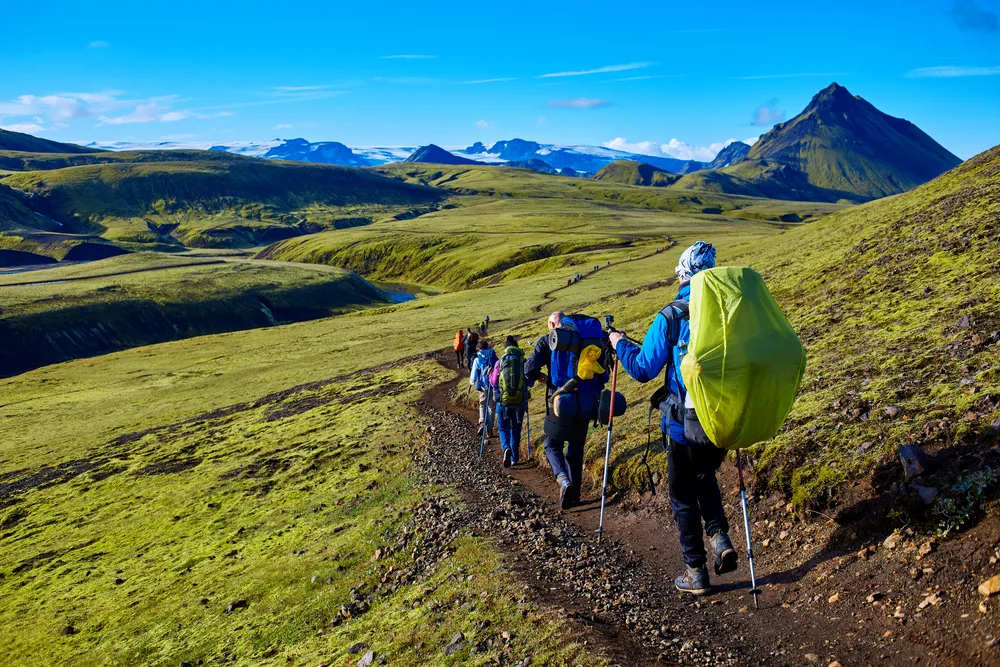
Vitalii Matokha/Shutterstock
The best time to visit Iceland is during the summer, when the terrain is passable even in the more remote areas of the country. Iceland is located close to the Arctic, but the effect of the Gulf Stream means that it has a milder climate than many other places at the same latitude.
Even with that mild climate, winters can be harsh, but summers are far more pleasant. Average daily temperatures are about 12 degrees Celsius, or 53 degrees Fahrenheit.
You won’t be packing shorts, but at least the temperatures are above freezing. More important than the higher temperatures is the lower precipitation. Iceland’s climate is rainy and stormy, and during most of the year, you can expect frequent downpours.
During the summer, the weather is at its coldest. The country receives the least amount of rain in June and July. There’s always a chance of a storm, but you have the highest chance of sunshine during the summer; plus, the day is long — this is the time of the famous midnight sun.
Thanks to the good weather, we think that summer is the best time to visit. You also have the highest chances of getting good photos thanks to the clear skies, and of seeing wildlife like the famous puffin colonies or migrating whales.
The summer is the best time to visit more remote regions of Iceland, especially the interior highlands. Due to the mild weather, even remote rural regions are accessible during this time.
According to the official Iceland tourism board, challenging trails like Landmannalaugar are only accessible from mid-June to mid-September. The roads are closed during the rest of the year because they’re impassable.
Summer is absolutely Iceland’s high season, and the more popular attractions may be packed with tourists and require some advanced planning.
However, the benefit of visiting during the high season is that there are more tourism-related businesses open, such as organized tours to remote locations. Plus, the capital Reykjavik is super lively during this season thanks to the long days and relatively warm weather.
Many of Iceland’s national holidays and top festivals are during this time, such as:
- Fishermen’s Day (early June)
- Summer Solstice (June 21)
- Reykjavik Arts Festival (July)
- Reykjavik Pride (August)
Cheapest Time to Visit Iceland
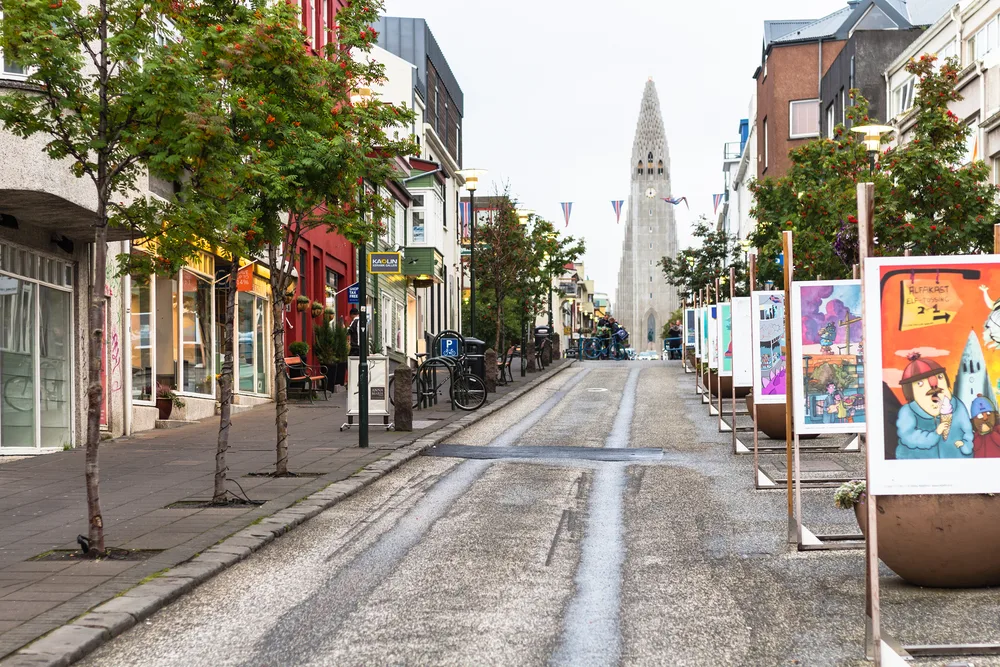
REYKJAVIC, ICELAND – SEPTEMBER 5, 2017: people on Skolavordustigur street and view of Hallgrimskirkja church in Reykjavik city in autumn. Reykjavik is the capital and largest city of Iceland/Vvoe/Shutterstock
The cheapest time to visit Iceland is during the off-season, which encompasses most of winter (November to mid-December and January to March).
Iceland’s winters aren’t as cold as that of other Nordic countries, but they are still fairly frigid and stormy. The bad weather chases away many tourists, so the lower demand drives prices down.
There is an increase in prices towards the end of December as some tourists take advantage of holiday time off to come to Iceland, but most of winter has more affordable prices. One of the biggest expenses when coming to Iceland is accommodation.
Hotel rooms and vacation rentals in Iceland can be fairly expensive, but you can score discounts if you visit during the off-season. In Reykjavik, hotel rooms are discounted by 20% to 35%, and if you shop around, you can even find some rooms going for 50% off peak rate.
Flying to Iceland is surprisingly affordable since it’s reasonably close to the United States and to Europe. November, January, and February are the cheapest months to find flight deals to Iceland.
Keep in mind that your day-to-day expenses in Iceland will stay the same no matter when you visit, as food is uniformly expensive. Some costs may even rise, since more remote places are only possible to visit in the winter with a guided tour instead of self-driving.
Least Busy Time to Visit Iceland
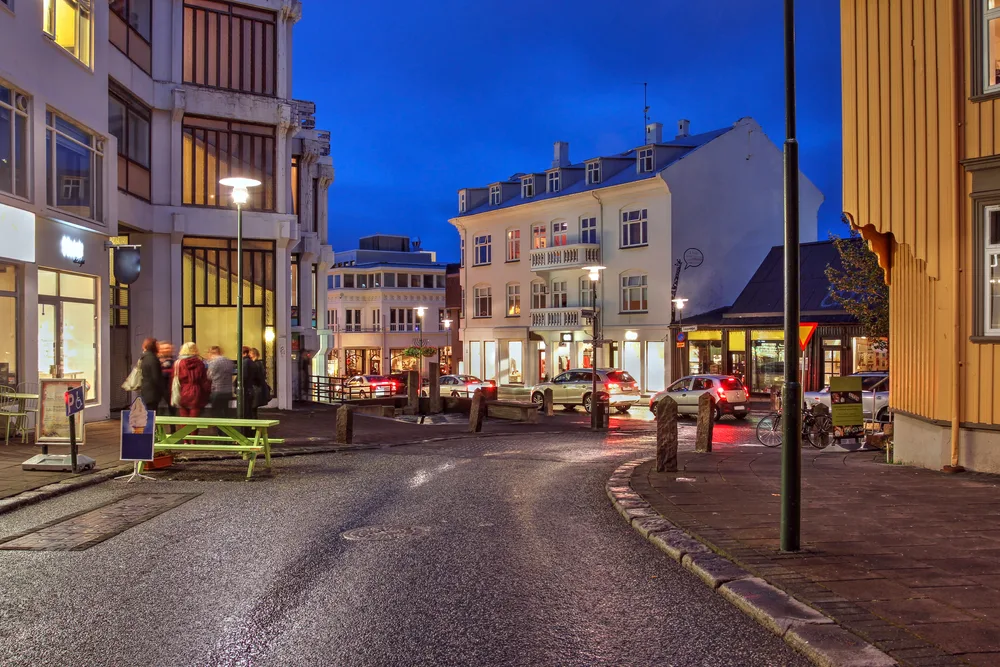
Mihai-Bogdan Lazar/Shutterstock
The least busy times to visit Iceland are during the shoulder seasons of late April to May and September to October. Spring and fall are short in Iceland, with colder temperatures and ever-changing weather — a storm can form in a matter of minutes.
Springtime average daily temperatures are about 32 to 50 degrees Fahrenheit, and the temperature range is similar in the fall. The weather is windy and rainy, although if you get lucky, you can catch a stretch of sunny days.
In late spring and early fall, the weather is still warm enough for hiking and exploring the outdoors, although some remote regions like the highlands are inaccessible during this time.
Plus, there is the benefit of avoiding most of the crowds that come to Iceland during the high season and really make more popular sites difficult to visit.
Fall is one of the best seasons to visit Reykjavik and the surrounding areas, in part thanks to the fewer crowds. This is a good time to visit one of the many spas and natural hot springs since you won’t have to worry about timed entry tickets.
Autumn is also one of the liveliest seasons for the cultural calendar in Reykjavik, with events like Iceland Airwaves to break up the doom of the coming winter. Outside of the cities, see a remnant of Iceland’s traditional pastoral way of life, like the rettir sheep-herding festivals.
Worst Time to Visit Iceland
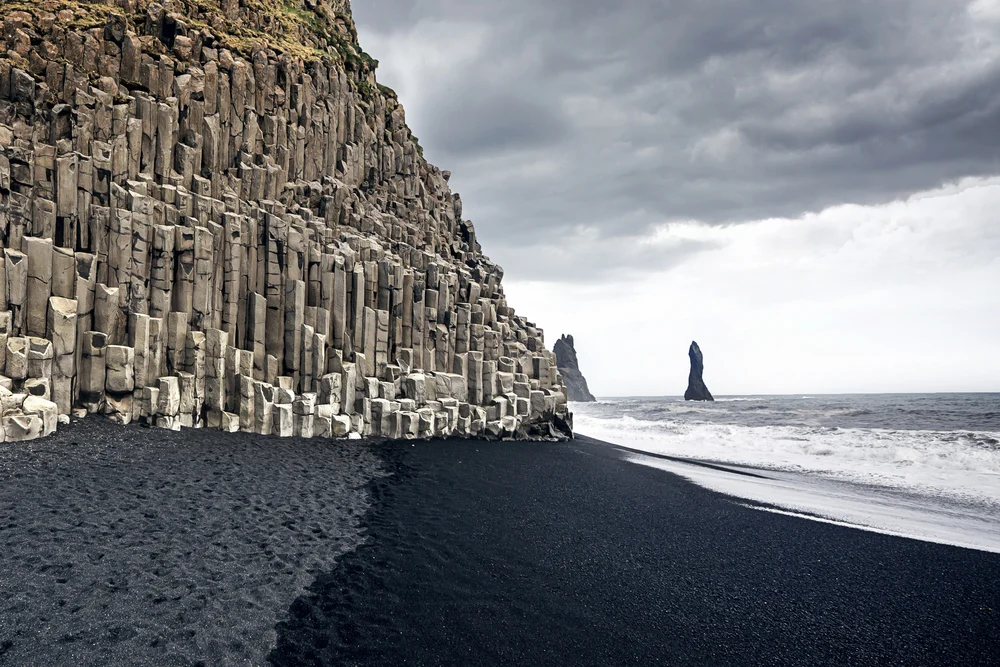
Andrey Bayda/Shutterstock
The worst time to visit Iceland is in the winter, when the weather is at its most unpredictable. Iceland winters are not cold by Nordic standards, with average daytime temperatures in January hovering around the freezing point.
However, the cold is the least of your worries. Like any country at this latitude, Iceland receives heavy snow, which renders much of the interior impassable and makes it difficult to see many popular attractions. Storms are frequent with driving winds, freezing rain, and heavy snow.
One can crop up at any time, and you may suddenly find yourself in the middle of a blizzard while on a hike or driving around. Driving conditions get worse during this time.
However, visiting during the winter is the best time to see the quintessential Iceland, the landscape that you’re probably picturing in your mind when you think of the country. Explore snow-covered landscapes on snowmobile tours.
Plus, the Northern Lights are only visible during the winter. Seeing them requires some luck, since the lights are only visible on clear nights and Iceland’s weather is famously stormy, but if you get lucky, you’ll make an Icelandic memory to last a lifetime.
Frequently Asked Questions
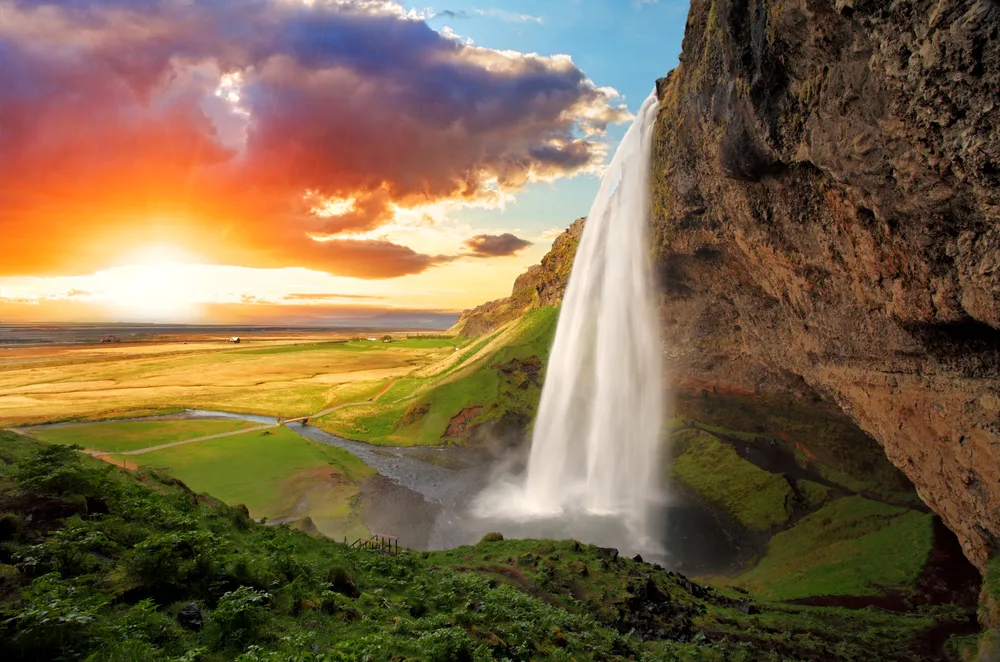
TTstudio/Shutterstock
Here are some common questions that people have to help them pick the best time to visit Iceland:
What month is best to visit Iceland?
June is the best month to visit Iceland because it has the best weather, with the warmest temperatures and the lowest chances of rain.
What is the cheapest month to visit Iceland?
The cheapest month to visit Iceland is January, which has the best deals on accommodation and flights.
What are the best and worst months to go to Iceland?
Some of the best months to go are September and May due to the good weather and fewer crowds, while January and February are the worst months weather-wise in Iceland.
What is the best time to see the Northern Lights in Iceland?
The best time to see the Northern Lights in Iceland is in the winter, especially from February to late March.
Is Iceland very expensive?
Iceland is a very expensive country to visit. You can save some money by visiting outside of the high season and making more of your meals as opposed to dining out in restaurants.
So, What’s the Best Time to Visit Iceland?
Iceland is at its best in the summer, when the weather is the most manageable and all parts of the country are accessible. If it’s not your first time visiting, you should come in late spring or early autumn to beat the crowds, but every person should see the glory of an Icelandic summer at least once.
So, with so much to see and do and plenty of amazing times to visit, what are you waiting for — book your trip today and experience for yourself all that Iceland has to offer. Happy travels!



